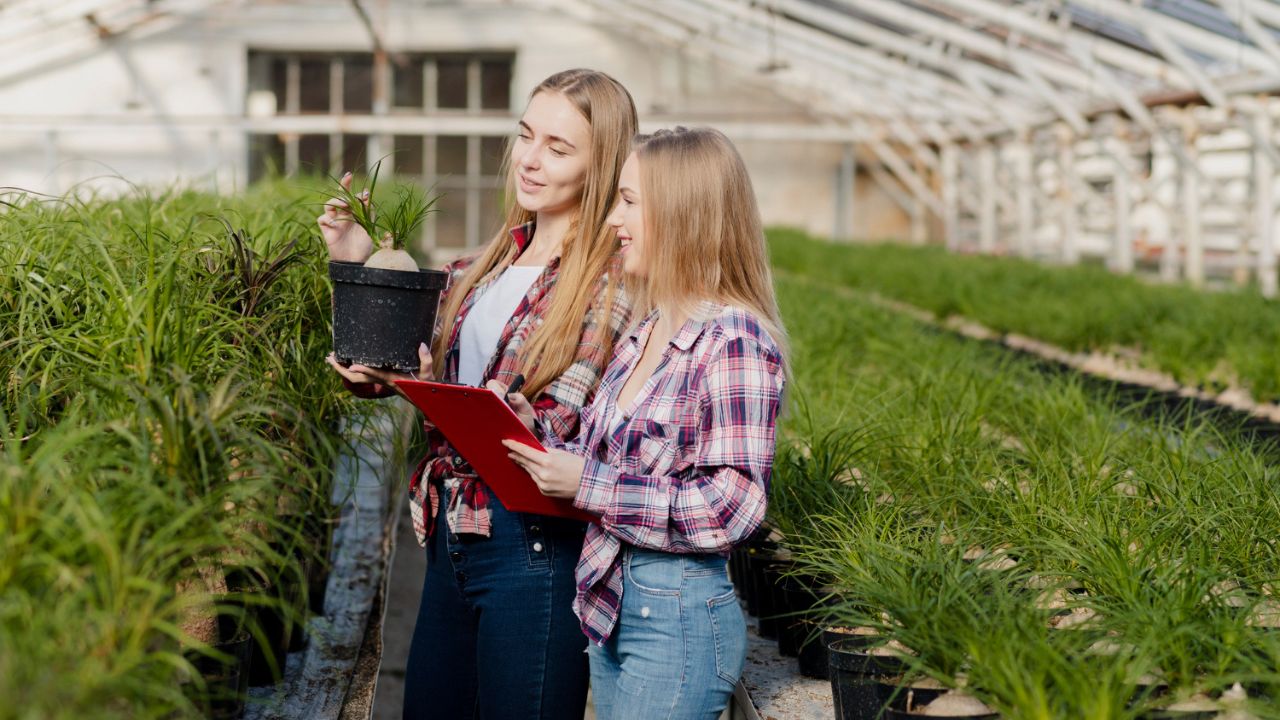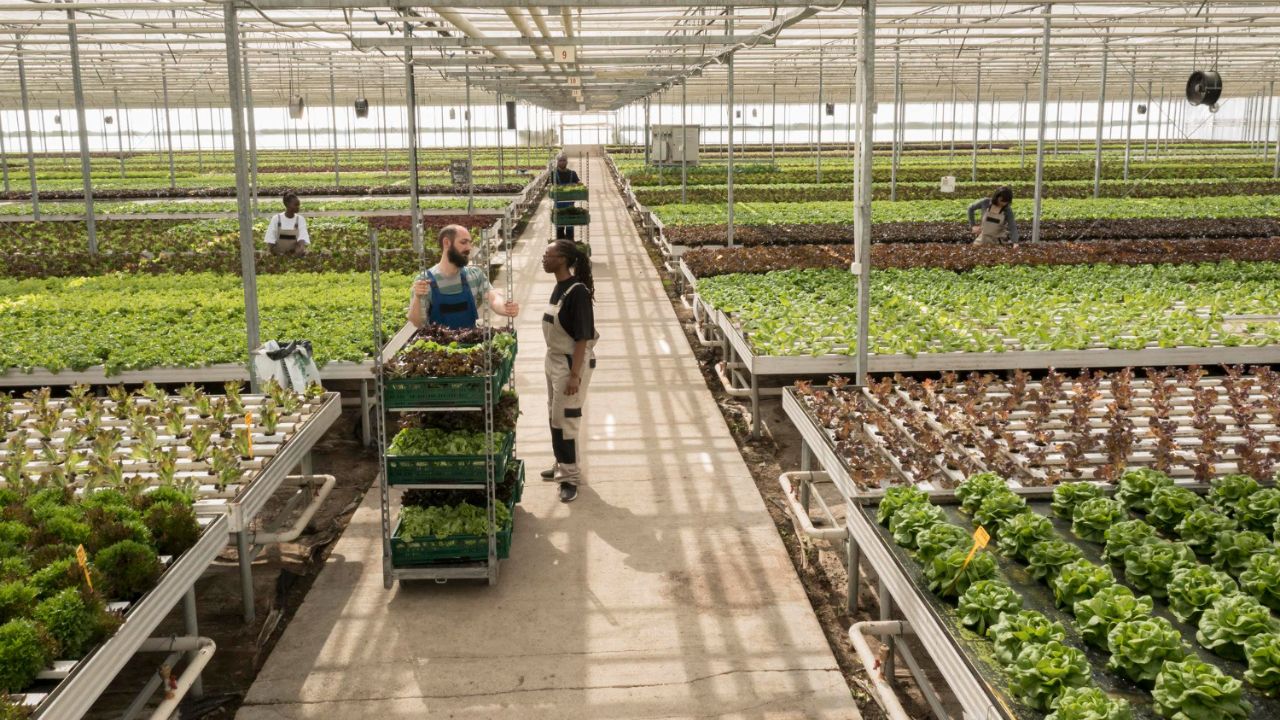The Netherlands looks tiny on a world map, yet it reshaped farming through science, teamwork, and careful use of space and water. This transformation did not rely on money talk or trade figures. It came from practical innovation, strong research, and rules that nudge growers toward cleaner methods.
Teens can learn a lot from this story. The Dutch model focuses on measuring what matters, reusing resources, and turning farms into smart systems. Here is how it works, and how you can apply parts of it in school gardens or future careers.
From fields to smart glass
Dutch growers moved delicate crops indoors, then treated greenhouses like laboratories instead of simple shelters. Inside, crops get steady light, precise irrigation, and better protection from pests. That control helps plants grow well on limited land, which is important in a dense country with little room to expand.
The shift is not just about putting glass over plants. It is about data. Sensors track temperature, humidity, and nutrient levels. Growers adjust settings to keep plants in their comfort zone, even when the weather outside swings. This makes harvests more consistent across the year.
The tech inside
Lighting is changing from older high-pressure sodium lamps to efficient LEDs. Researchers in the Netherlands have studied how LEDs save energy and can be tuned for plant growth. The national Kas als Energiebron program encourages this kind of energy-smart greenhouse design and pushes new concepts for the years ahead.
Algorithms also help. Wageningen University & Research runs an Autonomous Greenhouse Challenge where teams use artificial intelligence to steer climate and irrigation. The goal is steady yields with fewer inputs. When software watches every reading and adjusts the greenhouse quickly, plants feel fewer stress spikes, which supports quality and reduces waste.
Measurable growth
Controlled environments support lots of vegetables. Statistics Netherlands reports that tomatoes, peppers, cucumbers, and eggplants together covered roughly 4.1 thousand hectares in 2023. The exact mix changes year to year, but the broader picture is clear. Greenhouses let a small country grow a large amount of fresh produce in a compact footprint.
Water and nutrients in closed loops

Agriculture uses most of the world’s freshwater withdrawals. That is why Dutch systems focus on reuse. Greenhouse irrigation can be recaptured, cleaned, and fed back to plants. When the loop is tight, growers lose less water and fewer nutrients, and nearby canals stay cleaner.
Dutch research groups describe a future where soilless systems discharge almost nothing. The idea is called zero liquid discharge. It means all runoff is collected, disinfected, and reused, so fertilizer and crop protection products do not reach surface water. Many farms have already moved toward this approach with filtration and UV treatment.
Why it matters for the planet
Using water twice, or even three times, cuts demand on wells and rivers. It also keeps nutrients where plants can use them. That saves growers time chasing problems caused by imbalanced feeds or algae growth outside the greenhouse. For teens, the takeaway is simple. Catch the runoff in a tray, keep notes on how much your plants drink, and try to reuse clean water when possible.
Integrated pest management
Dutch greenhouses lean on integrated pest management, also called IPM. The European Union encourages this approach so growers rely less on broad chemical sprays. IPM combines careful monitoring, biological controls, and targeted actions only when needed. In a greenhouse, that might mean releasing predatory insects, using sticky cards, and adjusting climate settings to slow pest growth.
Energy, heat, and smarter infrastructure

Energy is a big deal in controlled environments. The Netherlands treats greenhouses as part of the energy transition, not separate from it. The Kas als Energiebron program promotes conservation and the use of renewable energy inside greenhouses. That includes better insulation, energy screens that trap heat at night, and the switch to LED lighting.
Geothermal heat
In several Dutch regions, greenhouse clusters tap geothermal heat from underground. Warm water circulates through pipes, then returns to the source. This steady baseline can replace or reduce fossil fuels in the heating mix. National analysts say production is growing, with a government goal for 2030 and longer-term expansion beyond that date. For teens, the core idea is not the exact number. It is the principle of finding steady, local heat sources that run day and night.
Storage and scheduling
Greenhouse teams also smooth their energy use. They store heat in large water tanks when it is cheap or available, then release it later. Some growers adjust lighting schedules to align with favorable energy hours. These tricks lower peaks and keep conditions stable for plants.
People and policy behind the change
Technology alone does not transform a country. The Netherlands pairs research, growers, and government so ideas get tested and adopted quickly. Wageningen University & Research sits at the center of this network. Trials move from research bays to commercial houses, then get refined and shared again. Students, engineers, and growers talk often, which speeds progress.
Rules also shape behavior. The European Union tracks progress toward reducing pesticide use and risk. This keeps pressure on member countries to support integrated pest management and safer alternatives. In the Netherlands, water rules push growers to reduce emissions from greenhouses to surface water by improving recirculation and treatment. Clear goals, even when tough, help the whole system focus on measurable improvements rather than quick fixes.
Culture of cooperation
Growers cluster their greenhouses to share heat, water treatment, and logistics. When companies know their neighbors, it is easier to try joint systems like geothermal wells or centralized disinfection. This culture began decades ago and remains a quiet engine behind continuous improvement.
What teens can try now

You do not need a glass roof to start. The Dutch playbook works in small places too. Begin with measurement. Use a simple soil-moisture meter or weigh a pot before and after watering. Keep a notebook or a notes app that tracks light hours, water use, and leaf color. Change only one thing at a time, then record what happens.
Design loops, not lines. Place trays under containers, catch runoff, and reuse it if it looks clean. If you grow in a small hydroponic system, mix nutrients carefully and top up with plain water to keep levels steady. Add a cheap aquarium pump for gentle circulation.
Lean on biology. Try sticky cards, hand removal of pests, and plant companions that attract beneficial insects. Look for varieties bred for your region, then give them consistent conditions. A little prevention saves a lot of recovery.
Experiment with light. Seedlings can do well under basic LED shop lights. Keep them close without touching leaves, then adjust height as plants grow. If you compare two light setups, change only the light and keep everything else the same, so your results are clean.
Connect school and science. Many universities publish free guides and videos on greenhouse climate, hydroponics, and IPM. Borrow one idea, try it in a small way, and record results. That mindset mirrors how Dutch teams test and adopt new methods without betting the whole farm.
The bigger lesson
The Netherlands transformed farming by turning it into a system that measures, recycles, and improves every season. The country’s limited land forced creativity, but the habits it built work anywhere. If you focus on data, closed loops, and cooperation, you can grow more with less, whether your garden is a balcony or a full greenhouse.
References
- Statistics Netherlands (CBS), September 2024. Centraal Bureau voor de Statistiek
- Wageningen University & Research, Autonomous Greenhouse Challenge page, 2025. WUR
- Wageningen University & Research, Kas als Energiebron concept and outlook, October 2024. WUR
- TNO, Geothermal energy production update and goals, July 2025. tno.nl/nl
- European Commission, Sustainable Use of Pesticides and pesticide reduction targets, 2024. Food Safety+1
- UNESCO, World Water Development Report statistics, February 2024. unesco.org


